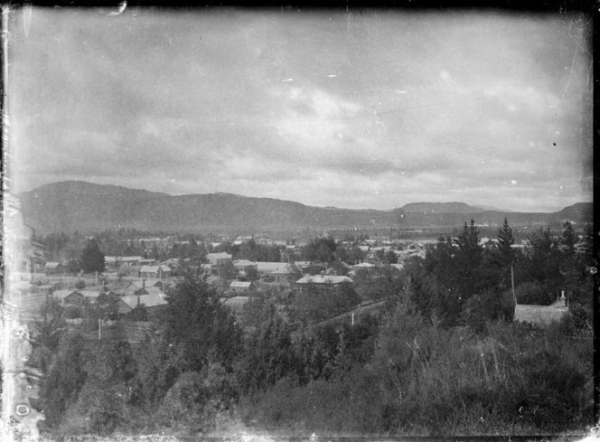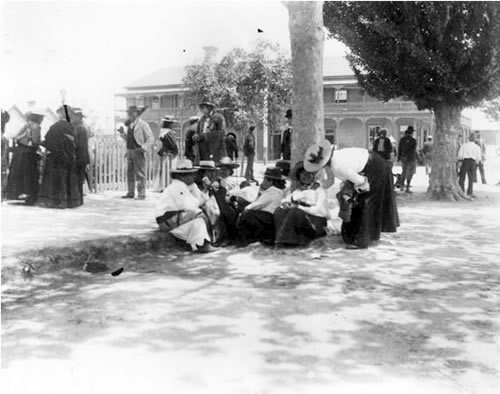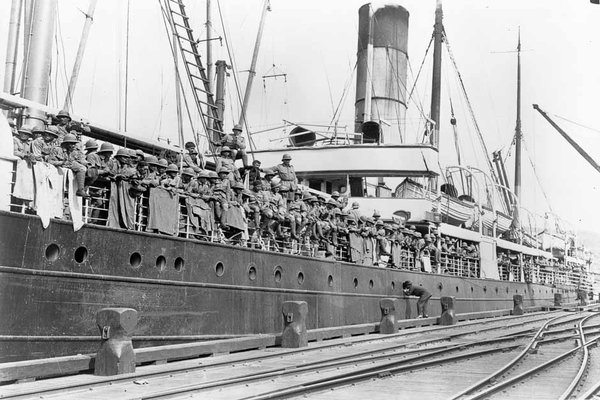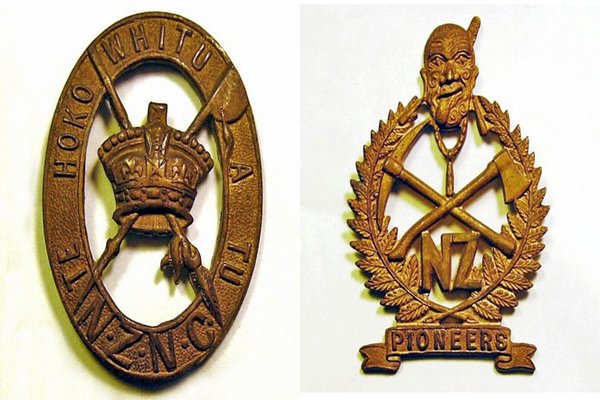Rotorua 1914, an introduction to Rotorua and to the Maori Pioneer Battalion.
Written by Danielle Cooper View of town, probably Rotorua. Photograph taken ca 1895-1916, probably by Robina Nicol of Wellington.
View of town, probably Rotorua. Photograph taken ca 1895-1916, probably by Robina Nicol of Wellington.
An Introduction to Rotorua and to the Maori Pioneer Battalion.
Rotorua, 1914. The place may seem familiar, but certainly not the date. Separated by generations, many of us (myself included) find it difficult to relate to WW1 and what the soldiers and their families went through during the war.
To take us back to that time I’m going to explore the Rotorua region of 1914, this blog being the first of a few blogs that look into how the war affected our region and city and the stories and connections that the people of Rotorua have with WW1 today.
The information found in the blog comes from Don Stafford’s The New Century in Rotorua, and Te Hokowhitu A Tu by Christopher Pugsley. I would highly recommend reading both of these books, and in regard to the history of Rotorua, the late Don Stafford CBE MBE was wonderful in preserving the history of Rotorua; his legacy from being Rotorua's official historian as well as the Rotorua Museum's first curator will live on through his books, research and photo collections which are available through the Rotorua Public Library and Rotorua Museum.
In 1901 the population of the Rotorua region was just 2237. The century opened in spectacular fashion for Rotorua with a visit from the Duke and Duchess of Cornwall and York who would later become King George V and Queen Mary. Rotorua at the time was first and foremost a tourist town but was expanding into other areas such as farming and forestry. At the turn of the century many changes were happening, with electricity coming to the town as well as the motor car and radio. In 1911 the population had grown to 5005 and in 1914 I imagine it wouldn’t have been much higher.

'Maori voters at Rotorua, about 1908', URL: http://www.nzhistory.net.nz/media/photo/maori-voters-at-rotorua-c1908, (Ministry for Culture and Heritage), updated 10-Jun-2014
Compulsory military training had begun in 1912 and due to this, there was already a large number of territorials and senior cadets in Rotorua. On August 4th, 1914 when war was declared, many of those same young men became among the first to volunteer from the Rotorua area. The Territorials merged with Thames, BOP and Rotorua to become the 6th Hauraki Company of the First New Zealand Expeditionary force.
Many Maori had already volunteered to go, and shortly after war was declared you would find many Maori in the Infantry and Mounted Rifle corps. The Government received telegrams from Te Arawa, Ngati Apa, and Ngati Kahungunu speaking of their desire around the formation of a Maori force.
“We of the Arawas, as our forefathers before us, offer our services to our King and country in whatever cause and whenever you see fit to call us. Our fervent prayer is God save the King”
However the Government initially was against the idea their reasoning behind it being that, “Maori should not take part in the wars of a White race against a White race”
When it became known that Indian troops and African troops had gone to assist the Powers, many Maori Tribes renewed their request. A contingent of 500 was agreed upon and within days 90 young men from Te Arawa had entered camp. The intention at the start was to send half to Samoa and the other half to Egypt but many Maori were against that idea and asked that all Maori soldiers be sent to Egypt. The government listened and the Prime Minister declared on the 28th of October 1914 that the whole contingent would go to Egypt.

'Maori Contingent departure, 1915', URL: http://www.nzhistory.net.nz/media/photo/native-contingent-depature, (Ministry for Culture and Heritage), updated 14-Mar-2016
The Maori men from Rotorua would make up the B company. They would be a pioneer battalion, and provide skilled labour for the New Zealand Expeditionary Force. The contingent arrived in Egypt in March of 1915 , and as the New Zealand and Australian divisions were being sent off to fight, naturally the Maori Contingent wanted to go as well. They were frustrated and made many pleas to be sent off to fight, but there were feelings that they were not considered by the Expeditionary Force as being good enough to fight.
The 6th Hauraki Company had left during October of 1914 and arrived in Alexandria, Egypt in December. In April of 1915 they left for the Gallipoli landing on April 25th. The New Zealand Expeditionary force suffered great losses in Gallipoli, with 2279 New Zealanders killed. According to Don Stafford in his book The New Century in Rotorua “There was, however, a sense of pleasure for Rotorua men at Gallipoli when, on 3 July, they welcomed the Maori Contingent, which included a number of old friends”. They had been sent as reinforcements to the New Zealand Brigades, as their forces had been depleted due to the fighting.

'Badges of Māori units in the First World War', URL: http://www.nzhistory.net.nz/media/photo/badges-of-maori-units, (Ministry for Culture and Heritage), updated 14-Mar-2016
Gallipoli was the start of the New Zealand campaign in WW1. It was the start of many battles and campaigns in WW1 that New Zealand had involvement in and lost lives. In my next blog I'll look into how the fighting moved to the Western Front, and New Zealand's involvement in the sites I will be visiting in September.

Danielle Cooper
John Paul College
Rotorua
Latest from Danielle Cooper
Related items
Media
Search
Who's Online?
The following members are online:
Latest Forum Posts
- No posts to display.
Powered by Technologywise / Design by yojodesign
